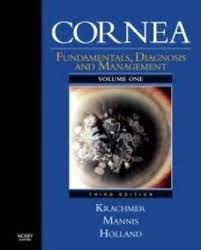Best Indicators for Detecting Keratoconus Progression in Children: A Report From the Shahroud Schoolchildren Eye Cohort Study
Authors
Affiliations
1Noor Ophthalmology Research Center, Noor Eye Hospital, Tehran, Iran.
2Student Research Committee, School of Medicine, Iran University of Medical Sciences, Tehran, Iran.
3Ophthalmic Epidemiology Research Center, Shahroud University of Medical Sciences, Shahroud, Iran.
4School of Computer, Mathematical, and Natural Sciences, Morgan State University, Baltimore, MD; and.
5Department of Epidemiology and Biostatistics, School of Public Health, Tehran University of Medical Sciences, Tehran, Iran.
Abstract
Purpose: The purpose of this study was to investigate 3-year changes in keratoconus (KC) indices to determine the indicators of KC progression compared with age-related changes in children aged 6 to 12 years.
Methods: In this report of the Shahroud Schoolchildren Eye Cohort Study, KC was diagnosed based on vision, refraction, tomography, and slitlamp examination findings. KC progression was defined as changes in refractive astigmatism or zonal maximum keratometry (Zonal Kmax-3 mm). Then, 3-year changes (Δ) in vision, refraction, and tomographic indices were compared between progressive KC and normal eyes. The best set of ∆parameters for distinguishing KC progression from age-related changes were determined using the area under curve (AUC).
Results: Eighteen KC eyes and 10,422 normal eyes were analyzed. All KC cases showed progression after 3 years. Δindices were statistically different between the 2 groups except corrected distance visual acuity, anterior radius of curvature, irregularity index, and KC percentage index. The best Δindices, in descending order of AUC value, were index of height decentration, Zonal Kmax-3 mm, refractive astigmatism, single point Kmax, and index of vertical asymmetry (all AUC > 0.9), followed by inferior-superior asymmetry, index of surface variance, minimum corneal thickness, index of height asymmetry, KC index, posterior radius of curvature, and Belin/Ambrósio total Deviation (AUC = 0.8-0.9).
Conclusions: According to our findings, changes in index of height decentration, Zonal Kmax-3 mm, refractive astigmatism, single point Kmax, and index of vertical asymmetry are the best indices for detecting KC progression in children younger than 12 years.
Keywords: children, Iran, Eye Cohort.

